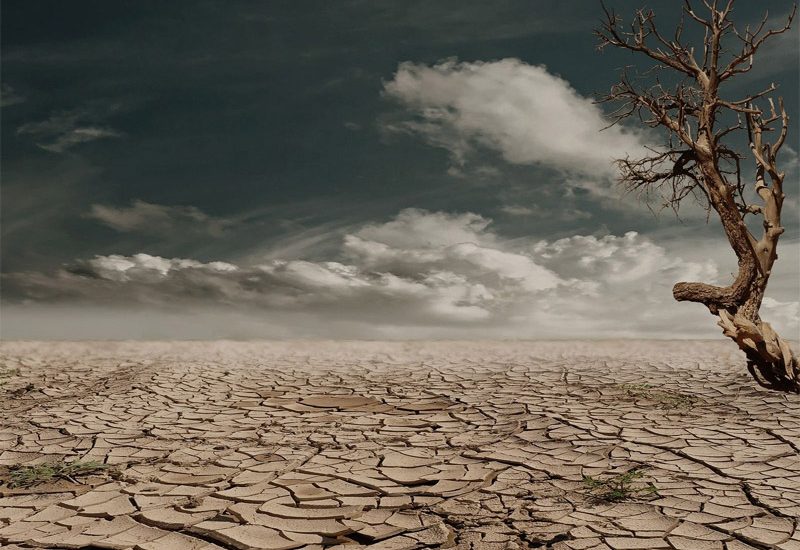CAN WE ACHIEVE CLIMATE JUSTICE WITHOUT GENDER EQUALITY?
- May 12, 2024
- Posted by: sarangmangi
- Category: Insights

The latest report of the Intergovernmental Panel on Climate Change (IPCC) ‘Climate Change 2022:Mitigation of Climate Change’ has warned about a “rapidly closing window of opportunity” to keep global temperature below 1.5°C. The IPCC report also reveals that more than 3 billion people are living in high-risk areas and by 2100 weather extremes are expected to increase exponentially, exposing up to 75percent of the global population to life-threatening heat, humidity as well as weather extremes such as storms, flash floods, and other natural disasters. These figures are merely a small part of the shocking facts revealed in the report. As the Earth’s temperature continues to rise,agricultural conditions and food supplies will deteriorate, and more people will be affected by food insecurity, diseases, poverty and violence.
The IPCC has consistently recognized that the effects of climate change are strongly gendered and differential, affecting different sections of the population indifferent ways. Vulnerable groups such as women,children, and people with disabilities are disproportionately affected by climate change, making them more vulnerable. For example, in developing countries, women are primarily responsible for natural resource management, such as obtaining food, water, and fuel; nonetheless, owing to long-standing gender inequities, women and girls face barriers to knowledge,movement, decision-making, and access to resources. Furthermore, due mainly to socio-cultural norms, women are less likely to seek relief and aid, worsening their livelihoods and well-being.
As a result, the IPCC has reiterated the need to put gender and human rights at the center of climate change policy making and implementation. However, despite a wealth of research showing strong linkages between climate change and gender equality, little has been achieved on this end and gender bias continues to be a hard truth at local, national and international levels. While women currently make up 45 percent of the COP26 team, men hold nearly all of the top public-facing and decision-making posts, despite the fact that in some countries, only 56 percent of men perceive climate change to be a significant concern, compared to 83 percent of women of government ministers worldwide are women—it is inevitable that climate delegations and summits are gender skewed.
There is an immediate need look at the issues of climate change as well its possible solutions through a human-rights based and gender responsive intersectional lens. An intersectional framework allows us to understand that different identities and conditions, such as ethnicity, socio-economic class, sexual orientation, and race morph the way we are impacted.
Intersectionality is especially important as we reach a world where marginalized groups are facing adverse effects of climate change further multiplied by various other forms of vulnerabilities. In other words, existing vulnerabilities and identities determine the level of impact one will face due to climate change. For vulnerable groups,including women and children, climate change is a ‘threat multiplier” as itexacerbates their current vulnerabilities.
However,we can turn this weakness into strength by focusing on gender equality and women’s empowerment. Research shows that women’s empowerment and gender equality lead to better climate outcomes. For example, evidence suggests that countries with a higher proportion of female lawmakers are more likely to pass climate friendly laws and ratify international environment treaties. Similarly, according to a report by the climate research organization Project Drawdown, “Empowering women and girls in developing countries ranked second among 76 solutions for curbing global warming to 2degrees Celsius.
Increase women’s representation in leadership positions at community, national, and international levels:
Women and girls account for about half of the world’s population. To reach the ambitious climate objectives, it is critical to ensure that women (especially indigenous women)are included in climate action and that sustainable green solutions are created. Indigenous women’s participation will also help bring in and utilize traditional knowledge and experience in areas such as innovation, waste, and energy management, which are valuable instruments in climate change measures.
Ensuring equity in climate financing:
Despite research indicating that women’s participation in natural resource management and conservation activities leads to improved outcomes, women have limited access to information, financial institutions, and natural resources such as land and water. For example, Leisher et al (2016) note that “For India and Nepal, there is strong and clear evidence of the importance of including women in forest management groups for better resource governance and conservation outcomes”. Therefore, climate financing systems should be adapted to adequately represent and reflect the needs and priorities of women as well as other vulnerable groups. This will allow climate financing instruments to benefit from the integration of diverse perspectives, resulting in more equitable and effective investments.
Inclusion of women in different cycles of project management including design, implementation, and evaluation:
Gender is across-cutting theme for both climate change adaptation and mitigation. To ensure effectiveness and sustainability of climate change interventions, it will be pertinent to integrate gender at design, implementation, and evaluation cycles. Additionally, efforts should also be made to ensure there is balanced gender representation within project teams. This will also allow the utilization of the wealth of knowledge and indigenous wisdom related to climate change.
Although there is plenty of evidence demonstrating the necessity of focusing on gender and its anticipated consequences on gender, there is still plenty of room for improvement and advancement in terms of human rights and gender responsive climate change adaptation and mitigation. To meet the targets there must be a stronger push to put more women in charge of managing, executing, and assessing climate change initiatives.
Conclusion:
Climate justice cannot be achieved without gender justice, and vice versa, since the climate crisis is inextricably tied to exploitation, gender injustice, and patriarchal gender norms and masculinities.The fate of the planet hinges on whether we can achieve gender justice before it’s too late.
